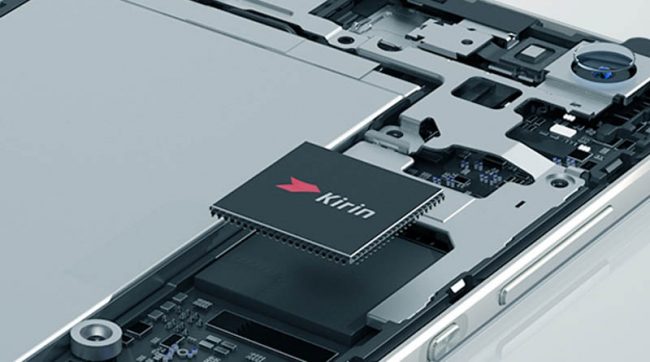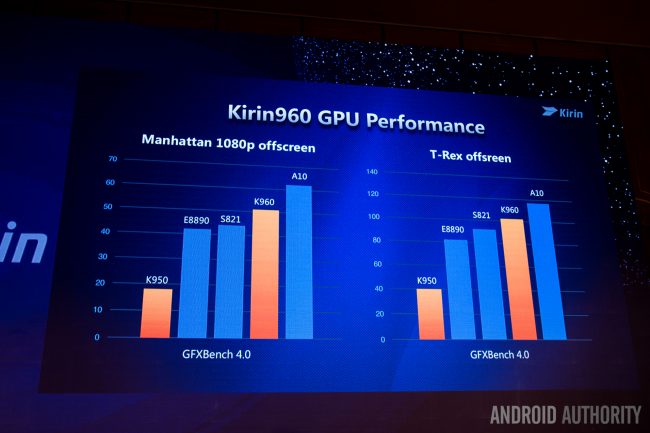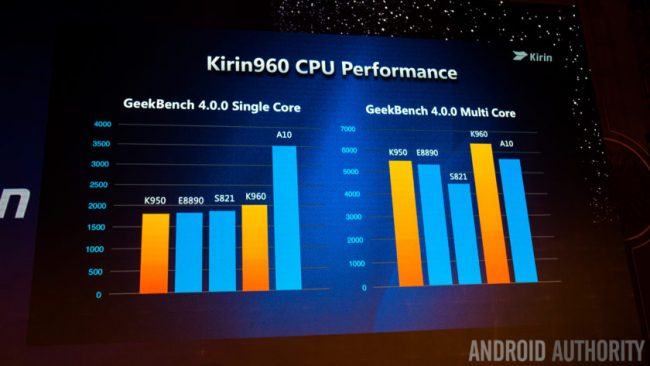Almost everyone is aware of the fact that Huawei makes and uses its own SoC. Hisilicon is the firm which makes processors exclusively for Huawei phones. The firm is completely owned by Huawei. Lately, Huawei has been doing good business, thanks to the likes of Honor 8. Though the processors made by Huawei are good, they were always lagging behind the likes of Samsung’s Exynos 8 and Qualcomm’s Snapdragon. This is why they were considered inferior to their competition. However, Huawei has successfully turned the tables with the launch of Hisilicon Kirin 960.

What’s new in the Hisilicon Kirin 960?
The latest flagship SoC by Hisilicon has overcome all the drawbacks which were present in its predecessor, Kirin 955. The CPUs in Kirin 955 were good but they were not backed by an equally good GPU. Weaker GPU made the device lag a little bit even during normal usage.
That is no longer the case. The octa-core Hisilicon Kirin 960 employs four high-powered Cortex-A73 CPUs and 4 energy-efficient Cortex-A53 CPUs. The A73s are clocking 2.4 GHz whereas the A53s are clocking 1.8 GHz.
Hisilicon claims that it offers a 15 percent performance boost. Also, the Cortex-A73 processors provide a more stable performance. They do so by heating up a lot less than the Cortex-A72; lesser heats means lesser variations in performance.

The Hisilicon Kirin 960 is the first chip to use ARM’s latest Bifrost GPU namely, Mali-G71. It uses 15 percent lesser power as compared to the others like T880 which is used in Kirin 955, Exynos 8 series and MediaTek Helio X25.
Also, the G71 houses 8 cores, which is twice of what was offered on the former high-end GPU – T880. This results in an enormous 180 percent performance boost along 20% power saving. The Bifrost technology makes it fully compatible for 4K and VR. Vulkan support is also seen for the first time.
What about the competition?
Hisilicon’s CPUs were always weaker against Apple A-series, Exynos 8, Qualcomm Snapdragon 800s. Despite many efforts, they were unable to make a better product but they kept on trying. That changes with Kirin 960.
The Hisilicon Kirin 960 did not only beat Qualcomm’s latest flagship (Snapdragon 821) and Exynos 8 at every instance, in some cases, it even left Apple‘s A10 Fusion processor in the dust.
In case you are unaware, the quad-core A10 processor inside the iPhone 7 Plus is clocked at 2.34 GHz. This means that the latest iPhone has a huge amount of raw power. It could have comfortably worked with even half of the power that it packs.
If the Hisilicon Kirin 960 can even beat this overpowered behemoth, it means that you have to take this one pretty seriously.
Next comes the Qualcomm Snapdragon 821. The latest flagship Qualcomm SoC literally got thrashed by Kirin 960 in every aspect. It feels like that the Huawei flagship was made with the sole motive of destroying the Snapdragon 821.
According to Geekbench 4.0, it is the new alpha in the multi-threaded test where it was followed by Apple A10, Exynos 8890 and Snapdragon 821 respectively. It the single core test, it was second only to A10, again ruining Snapdragon 821 and Exynos 8890.

Thirteen out of fourteen popular apps loaded more quickly on Hisilicon Kirin 960. Check image below.

HEVC and h.264 encode and decode are supported at 4K (30fps). It also supports UFS (Universal Flash Storage) v2.1 which contributes towards the improved responsiveness of the SoC. Another significant improvement comes in the form of added support for LPDDR4 RAM which will be music to the ears of many. Huawei also gave its word on camera ISP improvements.
The SoC also features a 4G LTE modem which can manage Cat 12/13 speeds (600 Mbps download and 150 Mbps upload).
Huawei is expected to introduce the Hisilicon Kirin 960 first on the Mate 9 which is expected to launch very soon.








